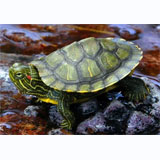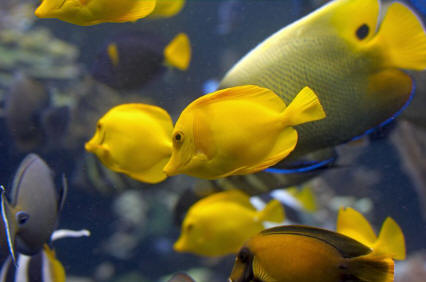Red Ear Slider Goldfish

|
Scientific Name: Carassius auratus Price: Upon Request Origin: South America Family: Turtles NOT AVAILABLE NOW |
|
Other Names: Red-eared Turtle |
|
Technical Info
Temperature: 24 - 27 ℃
Max size: 30 cm
Description
The red-eared slider is perhaps the best known and most recognizable of turtles. It is a medium sized turtle with a dark green oval shell, marked with yellow in younger turtles, green legs with thin yellow stripes and a green head with a red stripe behind the eye.
Food
Eats invertebrates, crustaceans, mollusks, fish, insects, snails, tadpoles, and aquatic plants. Young are primarily carnivorous, but consume progressively larger amounts of vegetation as they mature.
Breeding
Adult males of many species of sliders are characterized by the growth of long claws on their front feet. In addition many male sliders grow darker as they age. This appearance of long claws and the trend toward melanism can aid the slider keeper in identifying his males and females at a glance. Captive breeding is simple and straightforward in most sliders. The male engages in an elaborate courtship ritual that involves swimming above the female, scratching her carapace with his elongated nails, head twitching, and more. If their environment is healthy and females are given access to a proper laying area, sliders are quite prolific producers. Adults breed throughout the spring and a female can lay up to three clutches of 6-10 eggs each year. This species exhibits temperature dependent sex determination; eggs incubated at less than 27 C produce males, 28-30 C produce a mixed ratio, and those incubated at 30 C produce females. Be aware that adults eagerly consume hatchlings if a nest hatches within the adult s enclosure. Care must be taken to remove the eggs for incubation or to protect the nest with a wire cage if it is to be incubated on-site. Hatchlings thrive in the proper environment with good water quality, UVB and heat, and a varied diet. Babies relish invertebrates such as blackworms, small redworms, and even crickets as well as commercial pelleted food. They grow quickly and can reach breeding size in 3-4 years.

